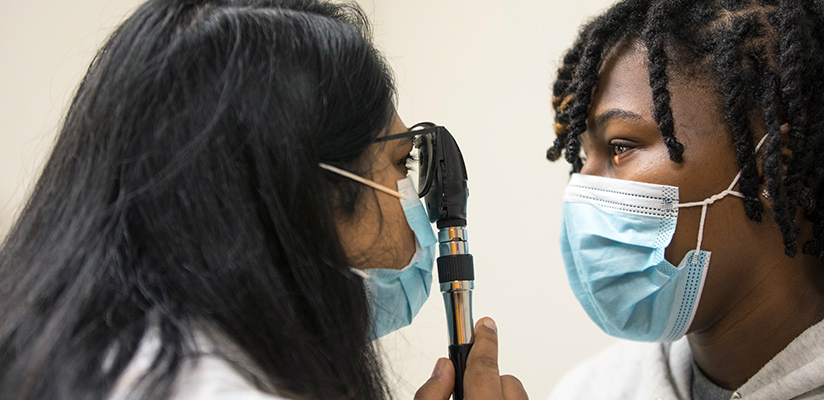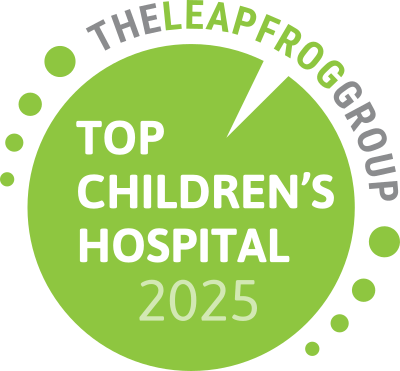Headache Help
Study: Trigeminal autonomic cephalalgias can begin early in life and exhibit similar symptoms as adults
All five headache disorders comprising trigeminal autonomic cephalalgias (TAC) can begin early in life and exhibit many of the same symptoms as TACs in adult populations, according to a study published in Cephalalgia by Director of Le Bonheur’s Comprehensive Headache Center Ankita Ghosh, MD. Literature on TACs in pediatric populations has been very limited and little is known about these headaches in children.
TACs include cluster headache, paroxysmal hemicrania, short-lasting unilateral neuralgiform headache attacks with conjunctival injection and tearing (SUNCT), short-lasting unilateral neuralgiform headache attacks with cranial autonomic symptoms (SUNA) and hemicrania continua. The lack of study into these headache disorders in children means that many can experience a delay in diagnosis or a misdiagnosis of their headache disorder.
“In cluster headache, the most common TAC, there is typically a delay in diagnosis of several years because of atypical headache features and lack of awareness of cluster headache in younger patients,” said Ghosh. “The objectives of our review and meta-analysis were to report on the full age ranges of pediatric TACs and determine if kids and adults with TACs display similar symptoms.”
In the meta-analysis, Ghosh and colleagues identified 86 studies for systematic review with patients from 24 countries and five continents. Results showed that every type of TAC can begin early in life. The youngest age of diagnosis for each TAC in this review was 1 year old for cluster headache and SUNA, 2 years old for paroxysmal hemicrania and SUNCT and 6 years old for hemicrania continua.
In this review, cluster headache was the pediatric TAC with the most available data. Cluster headaches were shown to be present in every pediatric age (1-18 years) and met the full criteria for cluster headaches established for adults in the ICHD-3 (International Classification of Headache Disorders). The most common differences between adult and pediatric symptoms were the frequency and location of attacks. Cluster headache diagnosis was also delayed or misdiagnosed as migraine in pediatric patients because pediatric patients had less cranial autonomic features and restlessness but similar rates of migraine symptoms.
In cluster headache, the most common TAC, there is typically a delay in diagnosis of several years because of atypical headache features and lack of awareness of cluster headache in younger patients.
The other types of TACs reviewed in this meta-analysis met most but not all ICHD-3 criteria, and very few studies examined these headache disorders in children. Further study is needed to understand the differences between adult and pediatric onset for these headache disorders.
“Our review of current literature strongly suggests that all five TACs can start very early in life,” said Ghosh. “These results have clinical implications for neurologists caring for pediatric patients with headache disorders to better diagnose and treat them appropriately.”
Spontaneous intracranial hypotension due to leaking spinal cerebrospinal fluid is an increasingly recognized cause of orthostatic headaches, although still considered rare in pediatric patients. Co-existence of SIH and orthostatic intolerance has not been described in young patients until our case series.”

CLINICAL IMPLICATIONS
- All five TACs can start early in life. Data is strongest for cluster headache.
- Pediatric-onset and adult-onset cluster headache have similar features. Cluster headache may be confused with migraine in children because of lower rates of cranial autonomic features and a similar rate of prototypically migrainous features.
- Pediatric cluster headache can be distinguished from migraine by attack duration less than two hours (more consistent with cluster headache) or more than three hours (more consistent with migraine). When the attack duration is two to three hours, pediatric cluster headache can be distinguished by number of attacks per day (more than one), presence of restlessness and strictly unilateral pain.
Case Series: Orthostatic headaches in young patients
Children and adolescents with spontaneous intracranial hypotension (SIH) failing to improve after treatment by epidural blood patching (EBP) should be evaluated for orthostatic intolerance, says Le Bonheur Pediatric Neurologist and Director of the Neuroscience Institute’s Comprehensive Headache Clinic Ankita Ghosh, MD, in research published in Child Neurology. Ghosh’s case series shows that SIH and orthostatic intolerance together can cause orthostatic headaches, and although symptoms may overlap, each condition requires different treatments.
“Spontaneous intracranial hypotension due to leaking spinal cerebrospinal fluid is an increasingly recognized cause of orthostatic headaches, although still considered rare in pediatric patients,” said Ghosh. “Co-existence of SIH and orthostatic intolerance has not been described in young patients until our case series.”
The research reviewed the cases of seven young patients presenting with orthostatic headaches, a headache that develops while standing and is relieved by laying horizontal, who were initially diagnosed with SIH. All seven patients were diagnosed with a cerebrospinal fluid (CSF) leak by CT myelography and were treated with EBP. However, patients continued to have symptoms of autonomic dysfunction, syncope and orthostatic headaches after multiple EBPs. Patients then underwent a head up tilt table test (HUTT) and were diagnosed with orthostatic intolerance.
“We recommend that young patients with SIH who do not obtain significant headache relief after multiple blood patches be evaluated for autonomic dysfunction with physiological studies such as HUTT,” said Ghosh. “All our patients improved with treatment for both SIH and orthostatic intolerance.”
Help us provide the best care for kids.
Le Bonheur Children's Hospital depends on the generosity of friends like you to help us serve 250,000 children each year, regardless of their family’s ability to pay. Every gift helps us improve the lives of children.
Donate Now















